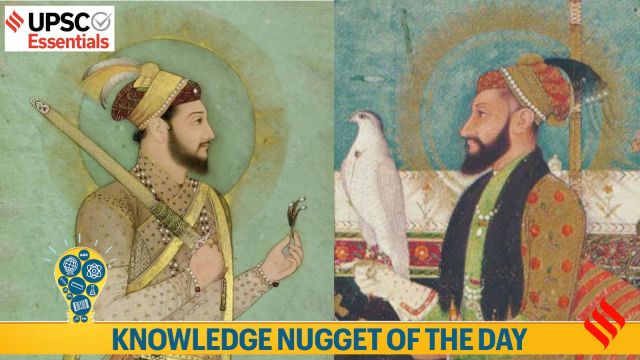Key Takeaways:
Dara Shikoh
1. According to Tariq Mansoor, Dara Shikoh strove to develop cordial relationships between people by finding commonalities between Hinduism and Islam. His most important works, Majma-ul-Bahrain (Mingling of Two Oceans) and Sirr-i-Akbar (Great Mystery), are devoted to the cause of establishing connections between Hinduism and Islam.
2. Dara Shikoh concluded that the “hidden book” mentioned in the Quran was none other than the Upanishads and believed that to understand the Quran, one needed to study the Hindu text.
3. With the help of pandits, he translated 52 volumes of the Upanishads from Sanskrit to Persian into a tome called Sirr-e-Akbar (The Greatest Secret). He even drew an equation between Adam and Brahma — a view which, according to historians, led to him being branded a heretic and to his execution.
Story continues below this ad
4. However, he was defeated by his brother Aurangzeb in the War of Succession following Shah Jahan’s illness. Thus he was executed on the orders of Aurangzeb under a fatwa issued by his clerics stating that he had apostatised from Islam.
 Equestrian Portrait of Aurangzeb (Met Museum)
Equestrian Portrait of Aurangzeb (Met Museum)
Aurangzeb
1. Aurangzeb was born in Dohad (or Dahod) in present-day Gujarat on November 3, 1618. He was prince Khurram’s (not yet emperor Shah Jahan) sixth child, and third son, after Darah Shukoh and Shah Shuja.
2. He ruled over the Indian subcontinent for over 49 years and spent the last 25 years of his life in areas that now constitute the state of Maharashtra during his failed and expensive foray into the Deccan.
Story continues below this ad
3. Historians have long debated the religious policies of Aurangzeb. Jadunath Sarkar in his book, A Short History of Aurangzeb, claims that Aurangzeb wanted to establish ‘Dar-ul-Islam’, a complete Islamic state in India in which all dissenters were to be executed. On the other hand, Shibli Naumani, in his book, Aurangzeb Alamgir Par Ek Nazar, writes that “Aurangzeb’s zeal for Islam was that of a politician rather than a saint”.
4. Historian Audrey Truschke in her book, “The Life and Legacy of India’s Most Controversial King,” argues that Aurangzeb was not a modern man, and so it should be unsurprising that modern standards of bigotry do not advance our historical understanding of this Mughal king.
5. She has written that Aurangzeb protected more Hindu temples than he destroyed. By a fair margin, he employed more Hindus in his imperial administration than any prior Mughal ruler (50% more Hindus, proportionally, than Akbar had included, for instance). He also destroyed some temples, reinstated the jizya tax, and, along with the Marathas, caused mass human suffering in central and south India. However, she opines that the goal of a historian is to make sense of all of these aspects of Aurangzeb rather than singling out only one side of this complicated king.
BEYOND THE NUGGET: War of Succession
1. The Mughals did not believe in the rule of primogeniture, where the eldest son inherited his father’s estate. They followed the custom of coparcenary inheritance or a division of the inheritance amongst all the sons. This became the ground for the war of succession during the Mughal Empire.
Story continues below this ad
2. The war of succession broke out in 1657 after Shah Jahan fell ill. Though all four brothers — Dara, Aurangzeb, Murad, and Shuja — were locked in a bitter war, the first two were the serious contenders.
3. Aurangzeb battled fiercely with his brothers, eventually sentencing all three to death and confining his father to a gilded prison for the last seven years of his life.
| Battle |
Year |
Outcome |
| Battle of Bahadurpur |
February 24, 1658 |
Shah Shuja, the second son of Shah Jahan, who had declared himself independent governor of Bengal was defeated by Dara’s son Sulayman Shikoh. |
| Battle of Dharmat |
April 15, 1658 |
Aurangzeb defeated the combined army of Dara Shikoh and Jaswant Singh of Marwar. |
| Battle of Samugarh |
May 29, 1658 |
Dara was defeated by Aurangzeb and Murad. |
| Battle of Khajwa |
January 5, 1659 |
The battle between Aurangzeb and Prince Muhammad Shuja, the second son of Shah Jahan. Aurangzeb defeated Shuja. |
| Battle of Deorai (near Ajmer) |
March 14, 1659 |
Fought between Dara Shikoh and Aurangzeb. Dara fled to Sindh and sought refuge with Malik Jiwan, an Afghan chieftain. But Jiwan betrayed Shukoh and handed him and his second son, Sipihr Shukoh, over to Aurangzeb. |
Post read Questions
(1) The Battle of Dharmat was fought between (UPSC CSE 2003)
(a) Mohammad Ghori and Jai Chand
(b) Babur and Afghans
(c) Aurangzeb and Dara Shikoh
(d) Ahmad Shah Durrani and the Marathas
(2) Consider the following events from the reign of Aurangzeb and arrange them in chronological order.
1. Battle of Samugarh
2. Battle of Dharmat
3. Battle of Deorai
Select the correct answer from the code given below.
(a) 1, 2 and 3
(b) 3, 2 and 1
(c) 2, 3 and 1
(d) 2, 1 and 3
Story continues below this ad
(Source: Explained: Why the govt wants to locate Dara Shikoh tomb, and why it’s not easy, How Akbar and Aurangzeb have contrasting images in India and Pakistan, Dalhousie to Dara Shukoh: On the road with the ‘good’ Mughal)
Subscribe to our UPSC newsletter. Stay updated with the latest UPSC articles by joining our Telegram channel – IndianExpress UPSC Hub, and follow us on Instagram and X.
🚨 Click Here to read the UPSC Essentials magazine for March 2025. Share your views and suggestions in the comment box or at manas.srivastava@indianexpress.com🚨



 Equestrian Portrait of Aurangzeb (Met Museum)
Equestrian Portrait of Aurangzeb (Met Museum)





























